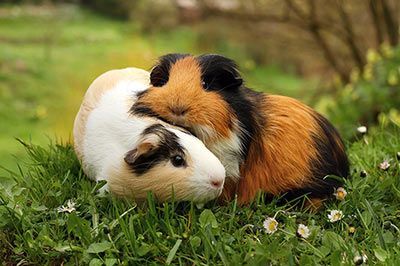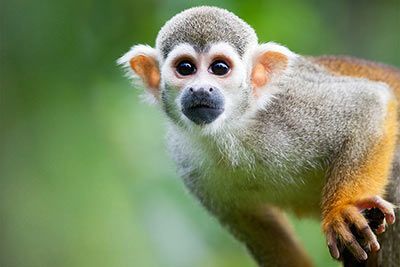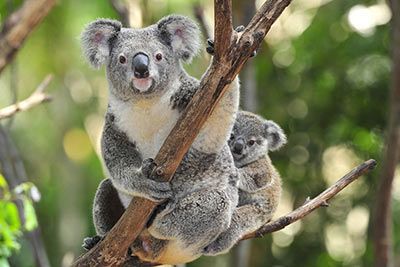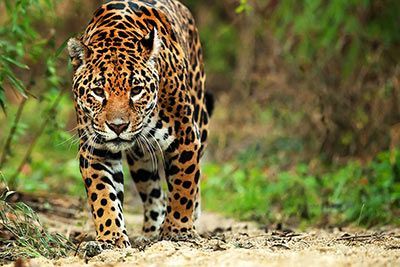Vampire Bat
Vampire Bat Facts
| Size | 2.5-3.7 in (65-95 mm) |
| Speed | Up to 24 mph (40 km/h) |
| Weight | 0.5-1.7 oz. (15-50 g) |
| Lifespan | 9-12 years |
| Food | Blood |
| Predators | Cats, birds of prey, snakes |
| Distribution | Central America, South America |
| Habitat | Caves, Trees, Buildings, Mines |
| Order | Chiroptera |
| Family | Leaf-nosed bats |
| Scientific name | Desmodontinae |
| Characteristics | Mammals that feed exclusively on blood |
Main Characteristics
Vampire bats are the only mammals that feed exclusively on blood.
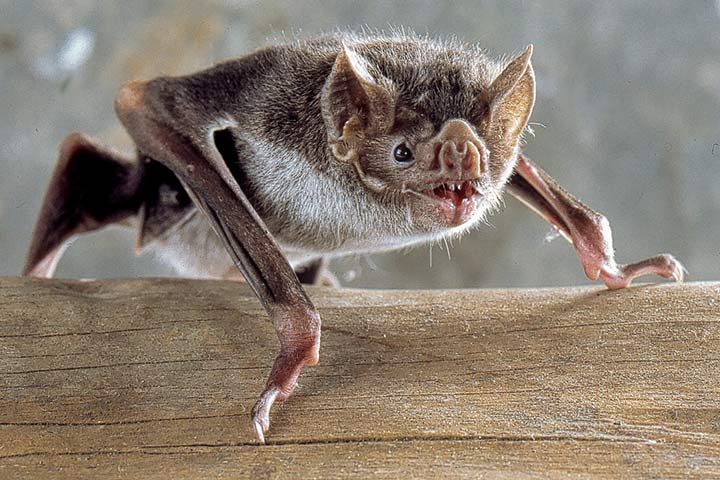
Species
There are three species: the common vampire, the white-winged vampire and the hairy-legged vampire bat.
Distribution and Habitat
If you live in Europe: No worries! There are no vampire bats in Europe. Where do vampire bats live? They are only found in Central and South America. Their range extends from Texas further south to Chile, Argentina and Uruguay.
Life Style
Vampire bats are nocturnal hunters. They are very social and live together in groups.
Anatomy and Appearance
Size and Weight
Vampire bats are 2.5 to 3.7 inches (65-95 mm) long and weigh 0.5 to 1.7 ounces (15-50 grams). Even though their body is very short and their weight is very low, the wingspan can be an astonishing 14 to 16 inches (35-40 cm).
Teeth
Vampire bats have specialized teeth in their upper jaws. They have a triangular shape and their tips are razor-sharp because there is no enamel there. This makes them perfect for cutting their prey's skin.
Nose
Their nose is a kind of infrared camera. With the soft skin of their nose they sense the warmth of other mammals.
Tongue
The underside of the tongue has long, deep grooves. They help to transport blood quickly through the gullet and into the stomach.
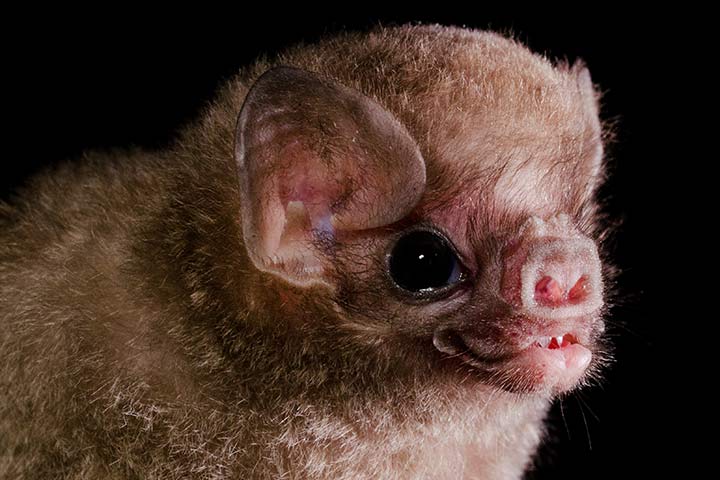
Diet
Vampire bats are the only mammals that feed exclusively on blood. They prefer the blood of mammals such as cattle, pigs, horses and goats, but also feed on the blood of birds. They have to eat every two to three days or else they will starve.
Hunting
Hunting Method
At night, vampire bats search for sleeping animals. Once they find one, they land on it. They crawl around on it a bit and look for the best place to bite it. When they crawl they look like a big, fat spider with fur.
Preparation for the Blood Meal
Vampire bats first remove a piece of fur and then lick the skin with their tongue. The saliva numbs the area and they can cut into the skin with their teeth until blood flows.
Blood Meal
If there is are no disturbances, they drink for about 30 minutes. The saliva ensures that the blood does not clot and keeps flowing. In total they drink 20-30 ml of blood. The idea that the animals sink their teeth into their veins and use their teeth like drinking straws is widespread. But wrong. Vampire bats don't suck blood. They lick it up with their tongue.
After the Blood Meal
A few minutes later, the animals excrete the water in their blood through their kidneys and bladder. This reduces their body weight and allows them to fly better.
Do Vampire Bats Hunt in Groups?
When dusk sets in, vampire bats leave their cave together. However, they don't hunt in groups, but alone. They don't go after a single animal by the hundreds.

Behavior
Social Behavior
Vampire bats usually form small groups of around 100 individuals. Even if it's hard to imagine, vampire bats are very social. They even supply starving members of their group with regurgitated blood. This is called altruism (“selflessness”). They also groom each other's fur. When it gets cold, they snuggle up together.
Do Vampire Bats Bite People?
Yes. It can happen. Vampire bats also feed on the blood of humans. However, they do not “suck” a person completely dry. The small bite and the loss of a few drops of blood are not life-threatening. But: The animals transmit diseases when they bite, especially rabies. In areas where vaccination against rabies is not common, fatal cases have already occurred. In 2004, 22 people in Brazil were infected with rabies after being bitten and died.
Are Vampire Bats Dangerous to Animals?
Vampire bats only feed on a tiny amount of blood. They can't “suck” any animal dry. Nevertheless, many grazing animals die from their bites - because they get rabies.
Senses and Abilities
Senses
Vampire bats have an excellent sense of sight and an excellent "sense of heat". Their sense of smell is also well developed. Like most bat species, they use echolocation to orient themselves.
Climbing
Vampire bats climb vertically up walls like spiders!
Running
Most bats can't walk because their legs are too short. However, vampire bats can! They use their strong forelimbs for running and like a small gorilla. Their top speed is 4 km/h.
Jumping
Yes. They also jump.

Life Expectancy
Vampire bats live to be 9-12 years old in the wild. In captivity they live up to 20 years.
Reproduction
Birth
Baby vampire bats aren't born upside down. It is one of the rare moments when a bat's head is at the top and the feet are at the bottom. Luckily, when the baby is born, it doesn't fall a long way: the mother catches it with her carefully spread wings. Like firefighters who spread out a jumping mat to catch someone who has to jump out of a burning building.
Mothermilk
The babies aren't fed blood. Like all mammals, they receive mother's milk. While the mother is nursing, she can't hunt. That's why they are supplied with regurgitated blood meals from friendly females. If a mother has an accident, the young will be adopted by another female. She takes care of it as if it were her own.
Fun Facts
Blood Thinner
Vampire bat saliva is very interesting to scientists. It can help stroke patients by dissolving blood clots.
The Vampire Bat Is Related To:
- Leaf-Nosed Bat
Animals in the Same Biome:
- Cow
- Eagle
- Falcon
- Goat
- Horse
- Pig
- Sheep
- Snakes
Video: 15 Facts About Bats
(Video opens on YouTube)
- Find Out more:
- Top 10 Animals Most People are Scared of















